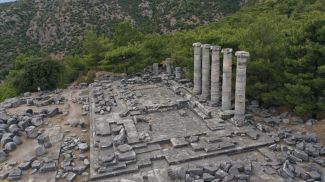
BIRJAND, 14 November (BelTA - IRNA) - Iran’s Minister of Cultural
Heritage, Tourism, and Handicrafts has announced the global recognition
of the village of Esfahak in South Khorasan’s Tabas County as one of the
World Tourism Organization’s top tourism villages for 2024.
Speaking on Wednesday, Reza Salehi Amiri highlighted that the historic village of Esfahak, located in the Dehestak district of Tabas County, was formally designated as top tourism destination by UNWTO on November 13, 2024. "This recognition marks a turning point in the resilience and revival of Esfahak," Amiri stated, adding that the village, which was severely damaged in the 1978 earthquake, was once deemed uninhabitable, forcing residents to live in temporary tents.
The minister noted that as villagers began rebuilding their lives, they initially constructed temporary wooden houses, known locally as "otagh choobi". Over the years, the community dedicated itself to sustainable living and cultural preservation, gradually restoring traditional clay structures with ancient adobe techniques, developing eco-tourism accommodations, and embracing sustainable practices.
Amiri said that Esfahak’s unique architecture and commitment to sustainability have attracted global attention, earning it a prestigious Asian architecture award. Today, the village draws tourists from around the world, celebrated for its exquisite adobe structures and the community's dedication to preserving local identity and heritage.
Speaking on Wednesday, Reza Salehi Amiri highlighted that the historic village of Esfahak, located in the Dehestak district of Tabas County, was formally designated as top tourism destination by UNWTO on November 13, 2024. "This recognition marks a turning point in the resilience and revival of Esfahak," Amiri stated, adding that the village, which was severely damaged in the 1978 earthquake, was once deemed uninhabitable, forcing residents to live in temporary tents.
The minister noted that as villagers began rebuilding their lives, they initially constructed temporary wooden houses, known locally as "otagh choobi". Over the years, the community dedicated itself to sustainable living and cultural preservation, gradually restoring traditional clay structures with ancient adobe techniques, developing eco-tourism accommodations, and embracing sustainable practices.
Amiri said that Esfahak’s unique architecture and commitment to sustainability have attracted global attention, earning it a prestigious Asian architecture award. Today, the village draws tourists from around the world, celebrated for its exquisite adobe structures and the community's dedication to preserving local identity and heritage.













